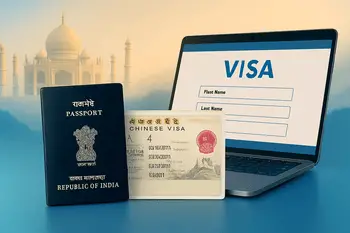
China’s dynamic and rapidly growing economy has positioned it as a global business hub, attracting companies and professionals from around the world.
As organizations expand and diversify, effective teamwork and collaboration have become essential for success in Chinese offices.
However, navigating the unique cultural, technological, and organizational dynamics of Chinese workplaces requires a nuanced approach.
This guide explores key strategies for fostering teamwork and collaboration in Chinese offices, supported by practical examples and insights.
1. Understanding the Cultural Context
China’s rich cultural heritage and unique social dynamics significantly shape workplace interactions.
To foster effective teamwork, it is essential to understand and adapt to these cultural norms:
1.1 Collectivism
- Chinese culture emphasizes collectivism, where the group’s needs and goals take precedence over individual interests. This mindset fosters unity and cooperation but can also discourage individual expression or dissent.
- Practical Tip: Encourage team-based rewards and recognition to align with the collective mindset. For example, celebrating team achievements rather than individual accomplishments can boost morale and cohesion.
1.2 Respect for Hierarchy
- Hierarchy and seniority are deeply ingrained in Chinese workplaces. Employees often defer to their superiors, and decision-making tends to follow a top-down approach.
- Practical Tip: When working in hierarchical environments, ensure that communication respects the chain of command. For example, address senior team members first in meetings and involve them in key decisions.
1.3 Guanxi (关系)
- Guanxi, or interpersonal relationships, is a cornerstone of Chinese business culture. Building trust and strong relationships is essential for collaboration.
- Practical Tip: Invest time in informal interactions, such as team lunches or after-work gatherings, to strengthen guanxi. These activities help build trust and improve team dynamics.
Further Reading: For a deeper understanding of Chinese cultural norms, refer to Hofstede Insights on China.
2. Effective Communication
Clear and effective communication is the foundation of successful teamwork.
In Chinese offices, cultural and linguistic differences can pose challenges, especially in multicultural teams.
2.1 Language and Translation
- Language barriers can hinder collaboration, particularly in teams with international members.
- Practical Tip: Provide language support, such as translation services or language training programs. For example, tools like DeepL Translator or hiring bilingual team members can bridge communication gaps.
2.2 Non-Verbal Communication
- Non-verbal cues, such as body language and facial expressions, play a significant role in communication. However, cultural differences can lead to misinterpretation.
- Practical Tip: Be mindful of non-verbal cues, such as avoiding excessive eye contact (which may be perceived as confrontational) and respecting personal space.
2.3 Active Listening
- Active listening ensures that all team members feel heard and valued, fostering a collaborative environment.
- Practical Tip: Encourage team members to paraphrase or summarize what others have said during discussions to confirm understanding.
External Resource: Learn more about cross-cultural communication in business from MindTools.
3. Building Trust and Relationships
Trust and strong interpersonal relationships are fundamental to effective teamwork in Chinese offices.
3.1 Team-Building Activities
- Organize activities that strengthen bonds and improve team cohesion. For example, group outings, workshops, or team lunches can foster camaraderie.
- Case Study: A multinational company in Shanghai reported improved team dynamics after implementing monthly team-building events, such as escape room challenges and cultural exchange workshops.
3.2 Open and Honest Communication
- Create a safe space where employees feel comfortable sharing their thoughts and concerns without fear of judgment.
- Practical Tip: Use anonymous feedback tools, such as SurveyMonkey, to encourage honest input from team members.
3.3 Recognition and Appreciation
- Regularly acknowledge team members’ contributions to boost morale and reinforce a positive work culture.
- Practical Tip: Implement a peer-recognition program where employees can nominate colleagues for their efforts.
4. Leveraging Technology for Collaboration
In today’s digital age, technology plays a crucial role in facilitating teamwork.
However, in China, it is essential to consider local tools and platforms.
4.1 Collaboration Software
- While global tools like Microsoft Teams and Slack are popular, local platforms such as WeChat Work and DingTalk are widely used in Chinese offices.
- Practical Tip: Adopt tools that align with local preferences and regulations to ensure seamless communication.
4.2 Project Management Tools
- Tools like Trello and Asana are effective for organizing tasks, but local alternatives like Teambition may be more familiar to Chinese teams.
- Practical Tip: Train employees on the chosen platform to maximize its effectiveness.
4.3 Cloud-Based Storage
- Use cloud-based storage solutions like Alibaba Cloud or Tencent Cloud, which comply with Chinese data regulations, to ensure secure document sharing.
External Resource: Explore a comparison of collaboration tools on TechRadar.
5. Encouraging Diversity and Inclusion
Diversity and inclusion are essential for fostering innovation and creativity within teams.
In Chinese offices, promoting these values can enhance collaboration and drive success.
5.1 Embrace Multiculturalism
- Celebrate different cultures, traditions, and perspectives to create an inclusive environment.
- Practical Tip: Host cultural exchange events where team members can share their backgrounds and experiences.
5.2 Provide Training and Support
- Offer diversity and inclusion training to raise awareness and promote understanding among team members.
- Practical Tip: Partner with organizations like Diversity Best Practices to access resources and training programs.
5.3 Address Gender Dynamics
- Promote gender equality by ensuring equal opportunities for all employees, regardless of their background.
- Practical Tip: Implement mentorship programs to support women in leadership roles.
6. Conflict Resolution and Problem-Solving
Conflicts are inevitable in any workplace, but effective resolution is essential for maintaining harmony and productivity.
6.1 Address Issues Promptly
- Tackle conflicts before they escalate by encouraging open dialogue.
- Practical Tip: Use structured frameworks like the “Interest-Based Relational Approach” to resolve disputes collaboratively.
6.2 Mediation and Facilitation
- Involve a neutral third party to mediate conflicts when necessary.
- Practical Tip: Train managers in mediation techniques to handle disputes effectively.
6.3 Culturally Sensitive Problem-Solving
- In Chinese workplaces, indirect communication is often preferred. Avoid direct confrontation and focus on finding mutually acceptable solutions.
- Practical Tip: Use private discussions or intermediaries to address sensitive issues.
Further Reading: Learn more about conflict resolution strategies from Harvard Business Review.
Conclusion: Driving Success Through Collaboration
Enhancing teamwork and collaboration in Chinese offices requires a deep understanding of cultural norms, effective communication, trust-building, and the strategic use of technology.
By embracing diversity, addressing conflicts sensitively, and leveraging local tools, organizations can create a positive and productive work environment.
China’s dynamic and evolving market offers immense opportunities for businesses that can adapt to its unique workplace culture.
By implementing the strategies outlined in this guide, you can foster collaboration, drive innovation, and achieve success in one of the world’s most competitive business landscapes.
External Resource: For more insights on doing business in China, visit China Briefing.


